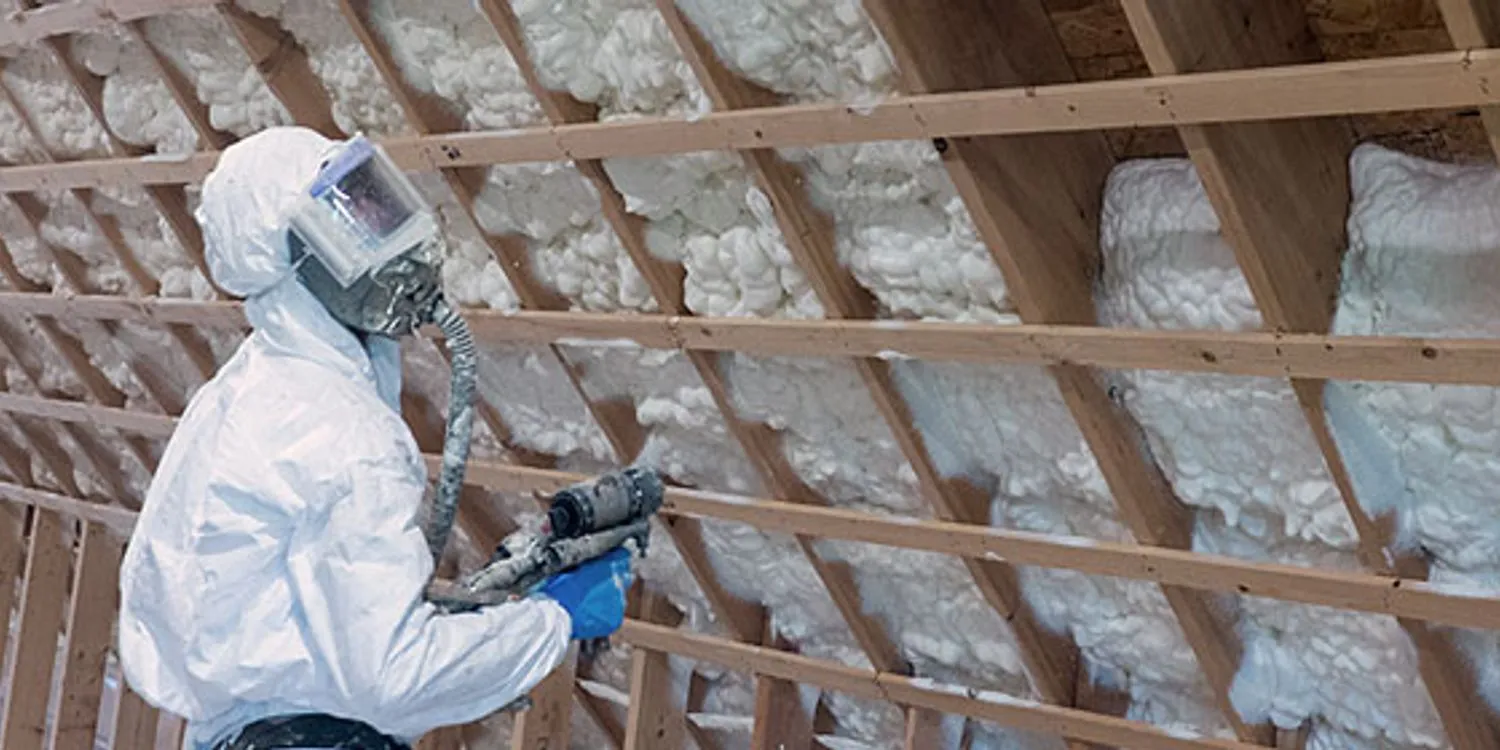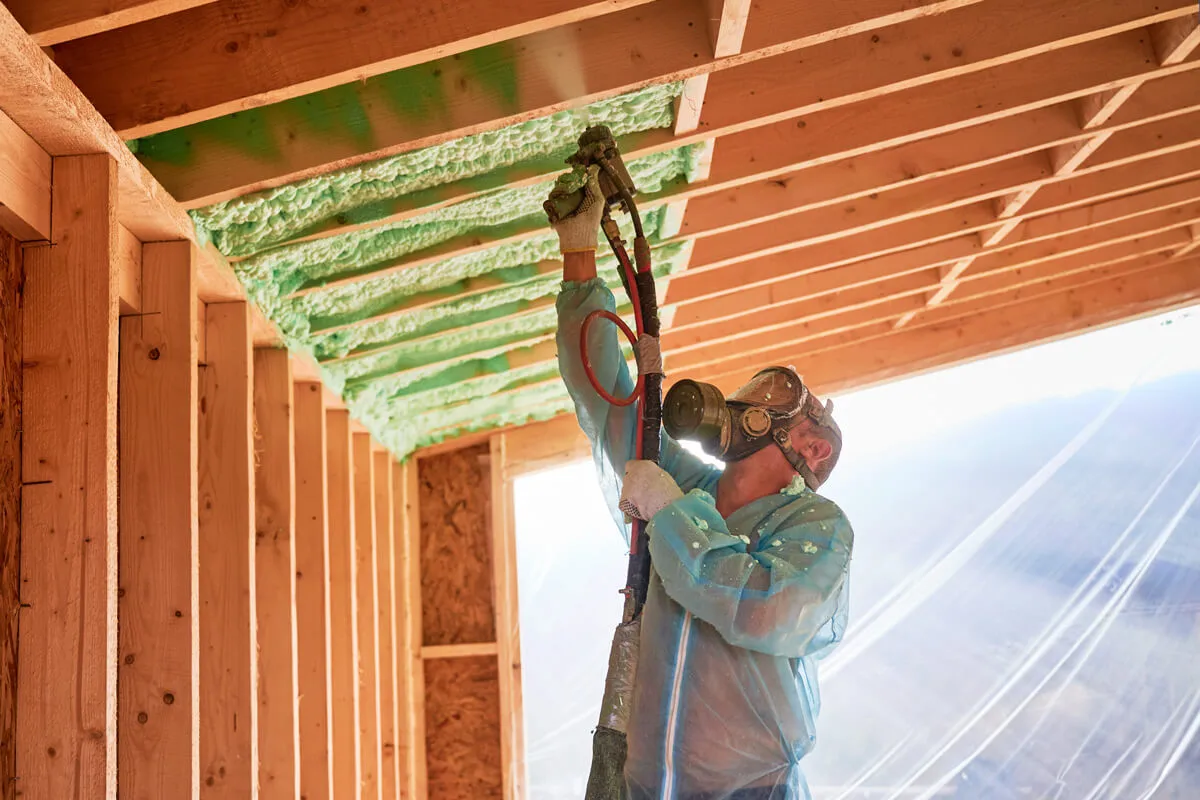
Maximizing Efficiency: The Power of Spray Foam Roofs
Spray foam roofs are gaining popularity for their durability and energy efficiency. They are created by spraying a combination of polyurethane foam and elastomeric coating onto a roof, which expands and solidifies to form a seamless, waterproof barrier.
These roofs offer several benefits, making them an attractive option for many homeowners and businesses. Firstly, they are highly energy-efficient.
The foam's insulating characteristics help to regulate indoor temperatures, decreasing the demand for heating and cooling equipment.
Spray foam roofing is also solid and long-lasting. They can survive for decades and outperform ordinary roofing materials when adequately maintained. Their seamless nature also minimizes the risk of leaks, which can cause costly damage to buildings.
Efficiency is crucial in roofing because it impacts the environment and the building owner's finances. Energy-efficient roofs can reduce a building's carbon footprint by decreasing energy consumption. Additionally, they can lower utility bills, saving money for the building owner in the long run.
Spray foam roofs offer a modern, efficient, and durable roofing solution. Their energy-saving benefits and long lifespan make them compelling for building efficiency improvements.
Spray foam roofs provide numerous benefits, making them popular with homeowners and businesses. One key advantage is their exceptional energy efficiency. The foam's insulating characteristics help regulate indoor temperatures, decreasing the demand for heating and cooling equipment. Spray foam roofing is cost-effective and environmentally friendly, resulting in significant energy savings.
Additionally, spray foam roofs are known for their durability and longevity. They can survive for decades and outperform ordinary roofing materials when adequately maintained. Their smooth design also reduces the likelihood of leaks, which can cause significant damage to buildings. This endurance translates into long-term cost advantages for building owners, who will not have to repair their roofs as frequently as they would with alternative materials.
Furthermore, spray foam roofs can provide immediate cost savings because they can be installed over existing roofing materials in many cases, reducing the need for costly tear-offs and disposal. This can make them a more affordable option compared to other roofing materials.
Spray foam roofs offer a range of benefits, including energy efficiency, durability, and cost savings. These advantages make them a compelling choice for those looking to improve the efficiency and longevity of their roofs.

Several vital considerations can impact the effectiveness and longevity of a spray foam roof. One crucial factor is the roof slope and drainage. Proper slope ensures that water drains effectively, preventing ponding and potential leaks. The design should also include adequate drainage systems, such as gutters and downspouts, to keep water from the structure.
Another essential consideration is insulation thickness. The thickness of the spray foam insulation influences the roof's energy efficiency and performance. A thicker insulation layer provides better thermal resistance, reducing heat transfer and improving energy savings.
Additionally, roof deck preparation is vital for a successful spray foam roof installation. The deck should be clean and dry, with no debris or impurities that could interfere with the foam's adhesion. Proper preparation also includes repairing damaged areas and ensuring the deck is structurally sound to support the weight of the foam and the roof system.
Several design considerations are crucial for a successful spray foam roof installation. These include roof slope and drainage, insulation thickness, and roof deck preparation. By carefully considering these factors, building owners can ensure they get the most out of their spray foam roof in terms of energy efficiency, durability, and performance.
A spray foam roof installation requires several critical stages to achieve a good and long-lasting outcome. The first step is surface preparation, crucial for proper foam adhesion. The roof surface must be clean, dry, and free of contaminants that could interfere with adhesion. Any existing roofing materials that are loose or damaged should be removed.
Next, the foam is applied to the roof surface using specialized equipment. The foam is sprayed onto the roof uniformly, creating a seamless, monolithic membrane. Different application techniques, such as low-pressure or high-pressure spraying, can be used depending on the project's specific requirements.
After the foam is applied, it undergoes a curing process, during which it expands and solidifies to form a durable, waterproof barrier.
The curing period varies according to the ambient temperature and humidity levels. Once fully cured, the foam is inspected for any imperfections or areas requiring additional attention.
Overall, the installation process of a spray foam roof is relatively fast and efficient compared to traditional roofing methods. However, skilled professionals must ensure proper application and adherence to safety guidelines. A spray foam roof can provide many years of reliable performance and energy savings by following the correct installation procedures.
Proper maintenance is required to preserve the durability and efficiency of a spray foam roof.
During inspections, cracks, blistering, and spots where the foam has separated from the substrate should all be checked. Any concerns should be resolved as soon as possible to avoid further damage.
Repairing leaks and damage is a critical part of spray foam roof maintenance. Any areas where water is infiltrating the roof should be identified and repaired. This may involve applying additional foam or coatings to seal the area and prevent future leaks. It's important to use compatible materials for repairs to ensure they adhere properly to the existing roof surface.
Recoating and rejuvenation can help extend the life of a spray foam roof. The roof's protective covering may erode over time due to exposure to the weather. Recoating the roof with a new protective coating layer can help restore its waterproofing properties and extend its lifespan. Additionally, rejuvenation treatments can be applied to revitalize the foam and restore its insulating properties.
Finally, frequent maintenance is essential for extending the life and performance of a spray foam roof. By conducting regular inspections, repairing leaks and damage, and recoating as needed, building owners can protect their investment and enjoy the many benefits of a spray foam roof for years.
The environmental impact of spray foam roofs is crucial for many building owners. The foam is typically made from recycled plastics and other materials, making it an environmentally friendly choice. Additionally, spray foam roofs can help reduce energy consumption and carbon emissions.
Furthermore, spray foam roofs can help mitigate the urban heat island effect. The white reflective coatings used on many spray foam roofs can reflect sunlight, reducing the heat absorbed by the building and surrounding area. This can help lower ambient temperatures and reduce air conditioning demand, reducing energy consumption and carbon emissions.
Overall, spray foam roofs offer a range of environmental benefits, from using sustainable materials to energy savings and carbon footprint reduction. By choosing a spray foam roof, building owners can contribute to a more sustainable future while enjoying the many practical benefits of this innovative roofing solution.
Case studies can provide helpful information about the effectiveness of spray foam roofs in real-world applications. Successful case studies showcase how spray foam roofs have been used to solve roofing problems and improve energy efficiency in various buildings.
One successful application of spray foam roofs is in commercial buildings. For example, a warehouse in a hot climate may have experienced high energy costs due to inefficient cooling systems. By installing a spray foam roof, the building owner improved insulation and reduced the need for air conditioning, leading to significant energy savings.
Before and after efficiency comparisons are often used to demonstrate the impact of spray foam roofs. These comparisons typically include data on energy consumption, indoor temperature regulation, and cost savings. For example, a school district may have upgraded its roofing system to spray foam to reduce energy costs. The district could then compare energy bills before and after the upgrade to quantify the savings.
Overall, case studies provide valuable evidence of the benefits of spray foam roofs. They demonstrate how this innovative roofing solution can improve energy efficiency, reduce costs, and provide long-lasting building protection.
FAQs
1. What is a spray foam roof?
A spray foam roof is a roofing technique in which a polyurethane foam coating is sprayed on the roof surface. This foam expands and solidifies, forming a smooth, watertight covering that helps insulate the building.
2. How long does a spray foam roof last?
With proper maintenance, a spray foam roof can last for 20 years or more.
3. Are spray foam roofs energy-efficient?
Yes, spray foam roofs are very energy efficient. The foam's insulating capabilities help to manage indoor temperatures, decreasing the demand for heating and cooling systems and resulting in energy savings.
4. Can spray foam roofs be repaired?
Yes, spray foam roofs can be repaired. Any damage or leaks should be addressed promptly to prevent further issues. Repairs typically involve applying additional foam or coatings to seal the area.
5. How much does a spray foam roof cost?
The cost of a spray foam roof depends on its size, installation difficulty, and other factors. The best way to receive an accurate price is to acquire a quote from a professional roofing contractor.
Conclusion
Finally, spray foam roofing provides various benefits, including energy efficiency, durability, and sustainability. Its smooth, watertight layer ensures long-term building protection, while its insulating characteristics help minimize energy expenses and carbon emissions. Proper maintenance and frequent inspections may keep a spray foam roof functional and efficient for many years.
If you're considering a roofing solution that offers both practical benefits and environmental advantages, spray foam roofs are worth exploring. Contact us.
Switch to spray foam roofing and enjoy the advantages of a durable, energy-efficient, and environmentally friendly roofing system.
Reach Out To Spray Foam Insulation Westminster
Delivering Quality Insulation Solutions in Westminster, Colorado
Call us today!